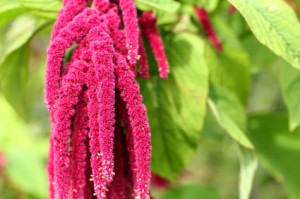Amaranthus
The Amaranthus genus is more commonly referred to as Amaranth and contains around 60 species, many of which are a popular choice with gardeners keen to add a splash of colour and a touch of the exotic to beds and borders. There is some debate within the gardening fraternity about whether certain Amaranth species are weeds.
Description
Amaranth is actually the name of a colour and is distinctively light red, although Amaranth flowers can also range from pink to white. Most Amaranth species are long and tall and each bush can contain tens of thousands of seeds.
Habitat
The Amaranth genus is believed to originate from Central America and South America and are now commonly found in countries with a warm climate.
Availability
Most species will bloom between August and October if planted in sunny areas. Amaranth flowers are considered to be easy to grow.
Species
It is from the family of Alstroemeria within the flowering plant order of Caryophyllales, which contains 33 families in total and over 11,000 species.
Some Amaranth species are consumed as a leaf vegetable in continents such as Africa, Asia and in many countries in Central America and South America.
Care Tips
It is best to plant Amaranth in April and May when the perils of winter have been banished for another year. Apply all-purpose fertilizer, water regularly and plant in a nice sunny spot, although ensure they also have some shade.
Did you know?
Amaranth oil has medicinal qualities and is used in the cosmetics industry to treat eczema, lower cholesterol and help to improve memory.
The Amaranth flower is believed to have been thought of as a symbol of immortality by the Greeks and the word Amaranth actually comes from the Greek word for everlasting or unfading.
Various parts of Amaranth plants are edible. The gluten free grains and seeds produced, for example, are used in foodstuffs like bread and pasta, while the leaves and stems are also fit for human consumption.
Resources
http://en.wikipedia.org/wiki/Amaranth
http://www.bbc.co.uk/gardening/plants/plant_finder/plant_pages/39.shtml
http://www.angelfire.com/journal2/flowers/a.html
http://www.theflowerexpert.com/content/growingflowers/flowersandseasons/amaranthus
http://herbika.com/oils/amaranth-oil.html
http://glutenfreecooking.about.com/od/nutritionmealplanning/a/amaranth.htm
http://www.britannica.com/EBchecked/topic/18481/Amaranthaceae



